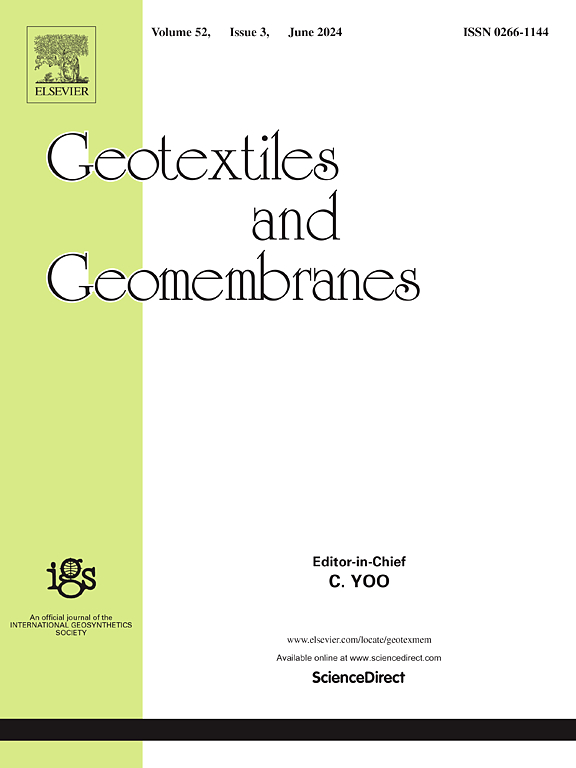Use of soilbags to protect flexible pipes against repeated load effects
IF 6.2
1区 工程技术
Q1 ENGINEERING, GEOLOGICAL
引用次数: 0
Abstract
An investigation was made of the over-trench bridging effect provided by soilbags to reduce the pressure on, and vertical and horizontal diametral change (VDC and HDC) of, buried flexible pipes, along with reductions in trench surface settlement (TSS). Full-scale tests examined the effects of burial depth, soilbag width, number of soilbag layers and distance between layers in trenches with 250-mm diameter pipes subjected to 150 surface loading cycles that simulated vehicular traffic. TSS reduced most when a soilbag was nearest the surface, while positioning a soilbag over the pipe's crown best protected the pipe. The soilbag's width must exceed 1.2 times the loading surface diameter/width to prevent unhelpful downward (punching) movement of soilbags into the trench backfill. Increasing soilbag width beyond 1.6–2 times that diameter/width or using more than two (sometimes three) soilbag layers, delivers diminishing returns. Using one to four soilbag layers, TSS, VDC and pipe pressure reduce to 45-15%, 70-15% and 75-25% of the unreinforced values, respectively, though the improvement rates diminish with increasing layers. Overall, TSS and pipe protection are similarly sensitive to the positioning of two layers of soilbags, while the spacing between the layers has the opposite effect.
使用沙袋保护柔性管道免受重复载荷影响
研究了土袋对降低埋地柔性管道的压力、垂直和水平直径变化(VDC和HDC)以及减少沟槽表面沉降(TSS)的桥接作用。全尺寸试验考察了埋深、土袋宽度、土袋层数和层间距离对管道直径为250毫米的沟槽的影响,这些沟槽在模拟车辆交通的150次表面加载循环中受到影响。当土袋靠近管道表面时,TSS降低最多,而将土袋放置在管道顶部可以最好地保护管道。土袋的宽度必须超过荷载面直径/宽度的1.2倍,以防止土袋向下(冲)进入沟填土。将土袋宽度增加到直径/宽度的1.6-2倍以上,或使用超过两层(有时是三层)的土袋层,收益递减。使用1 ~ 4层土袋,TSS、VDC和管道压力分别降低到未加筋值的45 ~ 15%、70 ~ 15%和75 ~ 25%,但改善率随着层数的增加而降低。总体而言,TSS和管道保护对两层土袋的定位同样敏感,而层与层之间的间距则相反。
本文章由计算机程序翻译,如有差异,请以英文原文为准。
求助全文
约1分钟内获得全文
求助全文
来源期刊

Geotextiles and Geomembranes
地学-地球科学综合
CiteScore
9.50
自引率
21.20%
发文量
111
审稿时长
59 days
期刊介绍:
The range of products and their applications has expanded rapidly over the last decade with geotextiles and geomembranes being specified world wide. This rapid growth is paralleled by a virtual explosion of technology. Current reference books and even manufacturers' sponsored publications tend to date very quickly and the need for a vehicle to bring together and discuss the growing body of technology now available has become evident.
Geotextiles and Geomembranes fills this need and provides a forum for the dissemination of information amongst research workers, designers, users and manufacturers. By providing a growing fund of information the journal increases general awareness, prompts further research and assists in the establishment of international codes and regulations.
 求助内容:
求助内容: 应助结果提醒方式:
应助结果提醒方式:


